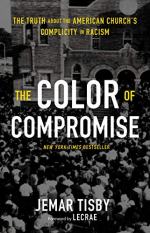|
This section contains 1,223 words (approx. 4 pages at 400 words per page) |

|
Summary
In Chapter 3, "Understanding Liberty in the Age of Revolution and Revival," discusses early ideas of freedom and independence in the American colonies. Frustrated by British rule, colonist leaders endeavored to secure their liberation from the imperial government. While the Declaration of Independence "appealed to the idea of universal human liberty passed down from an all-powerful deity," this liberty blatantly excluded black lives (43).
The Great Awakening preceded the American Revolution, and subsequent American independence from Britain. Colonists initially feared that evangelizing enslaved peoples would incite rebellion. During the Great Awakening, Protestantism became based on a personal and emotive relationship with Christ, rather than on good deeds. Enslaved Africans found these principles resonant with their spiritual heritages, gradually adopting and making Christianity their own. Though revivalists were eager to convert enslaved peoples, they did not believe "spiritual equality" meant "social equality" (45).
George Whitefield and Jonathan...
(read more from the Chapters 3 - 4 Summary)
|
This section contains 1,223 words (approx. 4 pages at 400 words per page) |

|




